Table of Contents:Abu Simbel Temples
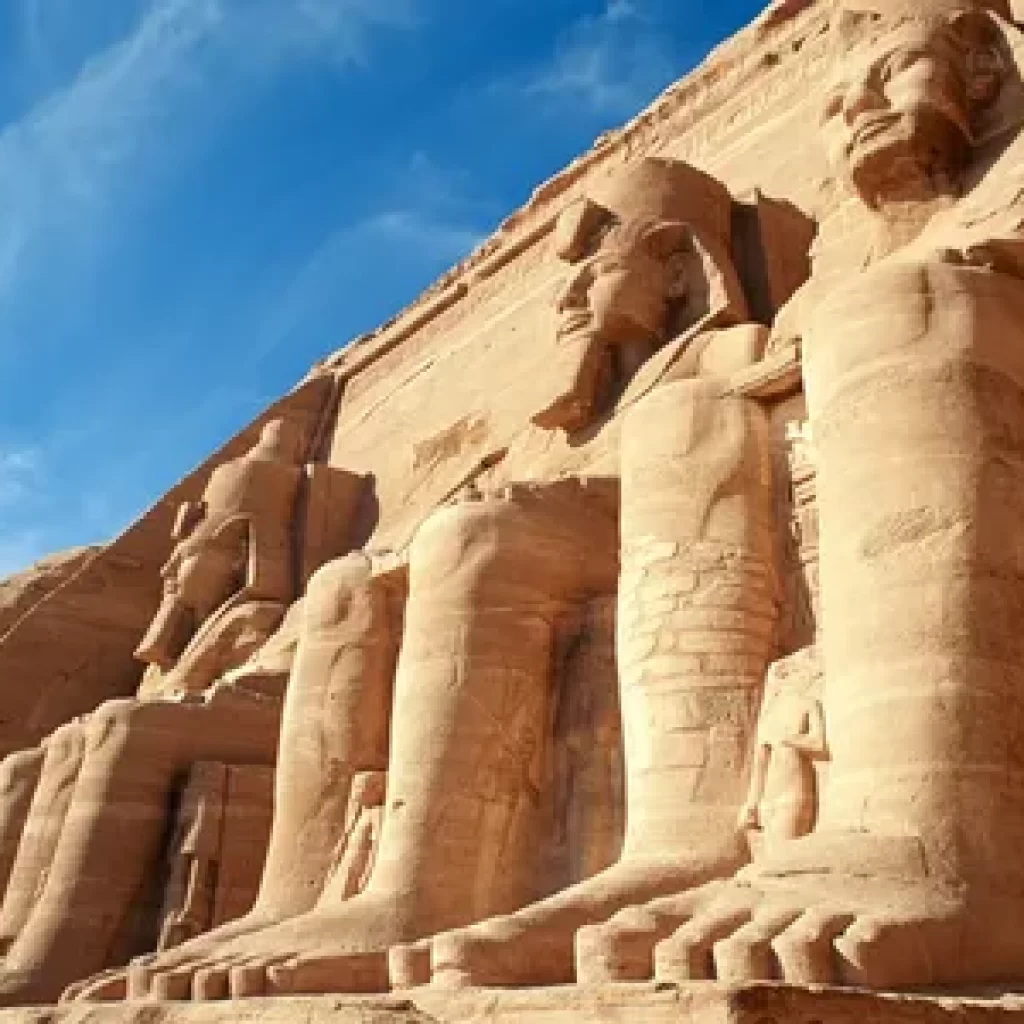
- Introduction
- The History of Abu Simbel Temples
- Architectural Marvels of the Temples
- The Great Temple of Ramses II
- The Smaller Temple of Nefertari
- The Relocation of the Temples
- The Significance of the Sun Festival
- The Temples’ Role in Ancient Egyptian Religion
- Visiting Abu Simbel: Travel Tips
- Preservation Efforts and Modern Challenges
- The Impact of Abu Simbel on Egyptian Tourism
- Conclusion
- FAQs
Introduction:Abu Simbel Temples
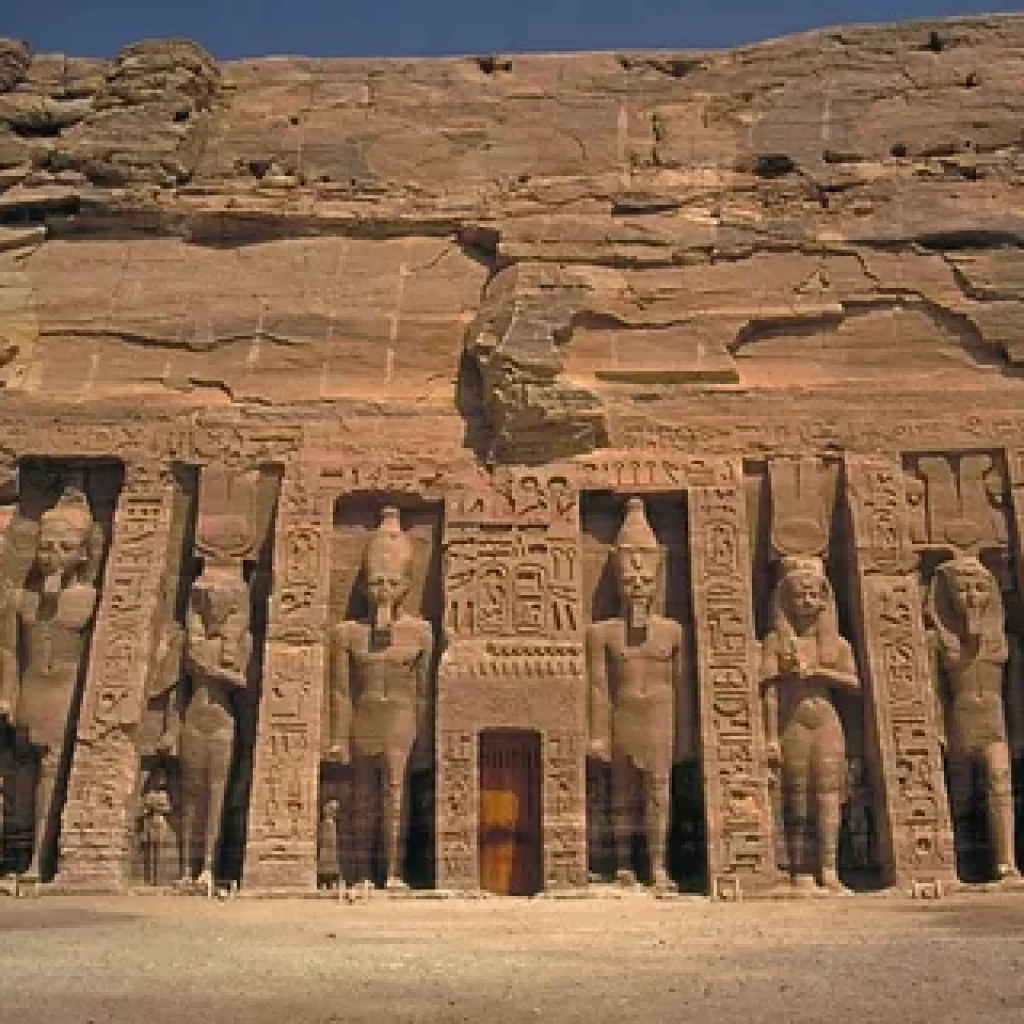
The Temple of Abu Simbel, while originally built by Ramses II in about 1250 BC, was relocated here only about 50 years ago. Abu Simbel was saved from being submerged in the lake and lost forever after an international outcry. Thanks to a heroic effort in 1968, this ancient temple was cut into huge blocks and relocated to this spot — high and dry for at least another 3,000 years of Abu Simbel temples.
1. The History of Abu Simbel Temples.
The temples were cut into solid rock in the side of a cliff during the reign of king Ramses II in the 13th century BC. It was a lasting monument to himself and his queen Nefertari, to remember his victory at the Battle of Kadesh (1274 BC). The Great Temples at Abu Simbel took about 20 years to build and after completion, they were dedicated to the gods: Amun Ra, Ra Harakhti, and Ptah, as well as the deified Ramses himself.
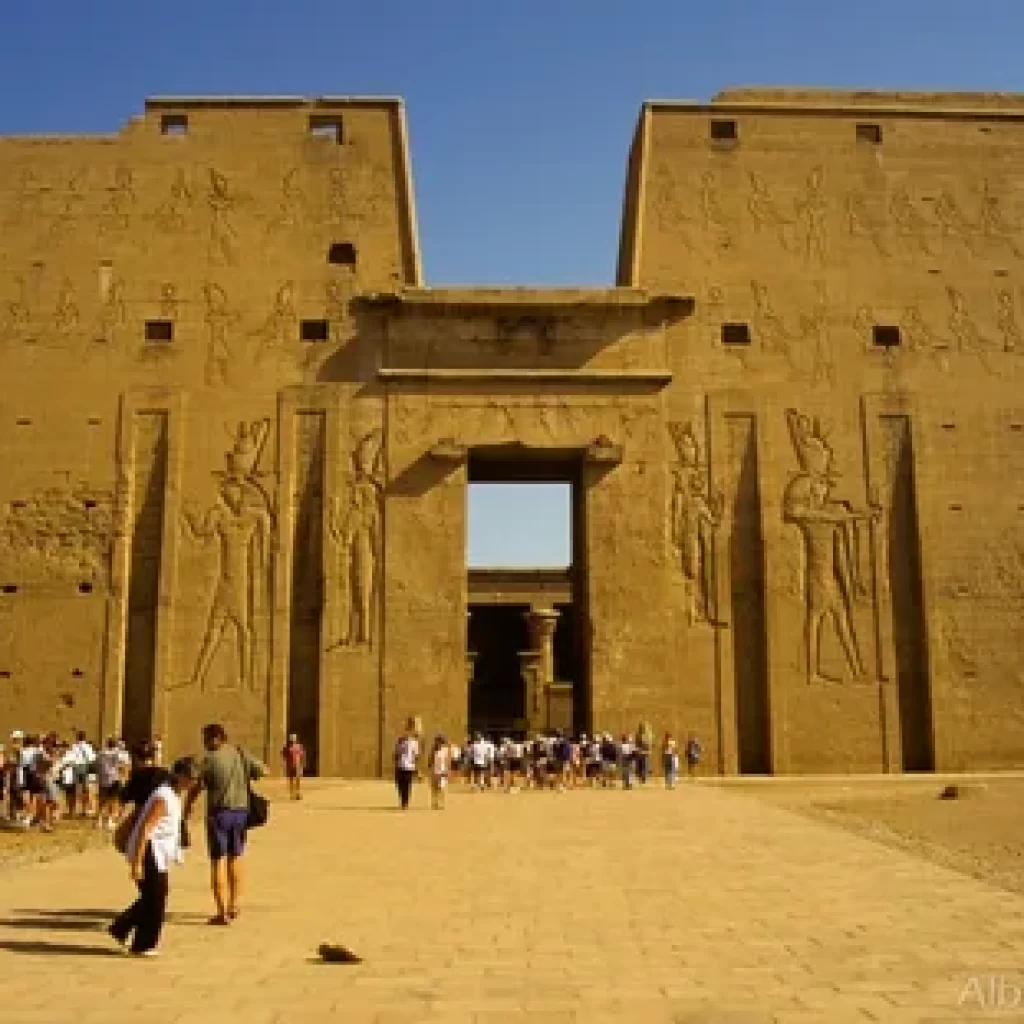
2. Architectural Marvels of the Temples
Four towering statues of the powerful pharaoh stand sentinel at the entry. Ramses’ wife and some of his children — considered less important and therefore smaller in scale — are at his feet. Inside, the central hall is lined with more imposing statues of Ramses. They’re surrounded by reliefs showing off his power.
3. The Great Temple of Ramses II
Here, the pharaoh leads his army into battle, riding his chariot thoroughly destroying his enemies. And finally, in the sacred sanctuary, Ramses assumes his place in the company of the gods. Admiring this one last magnificent temple, you can’t help but ponder the rich and complicated 5,000-year story of this civilization.
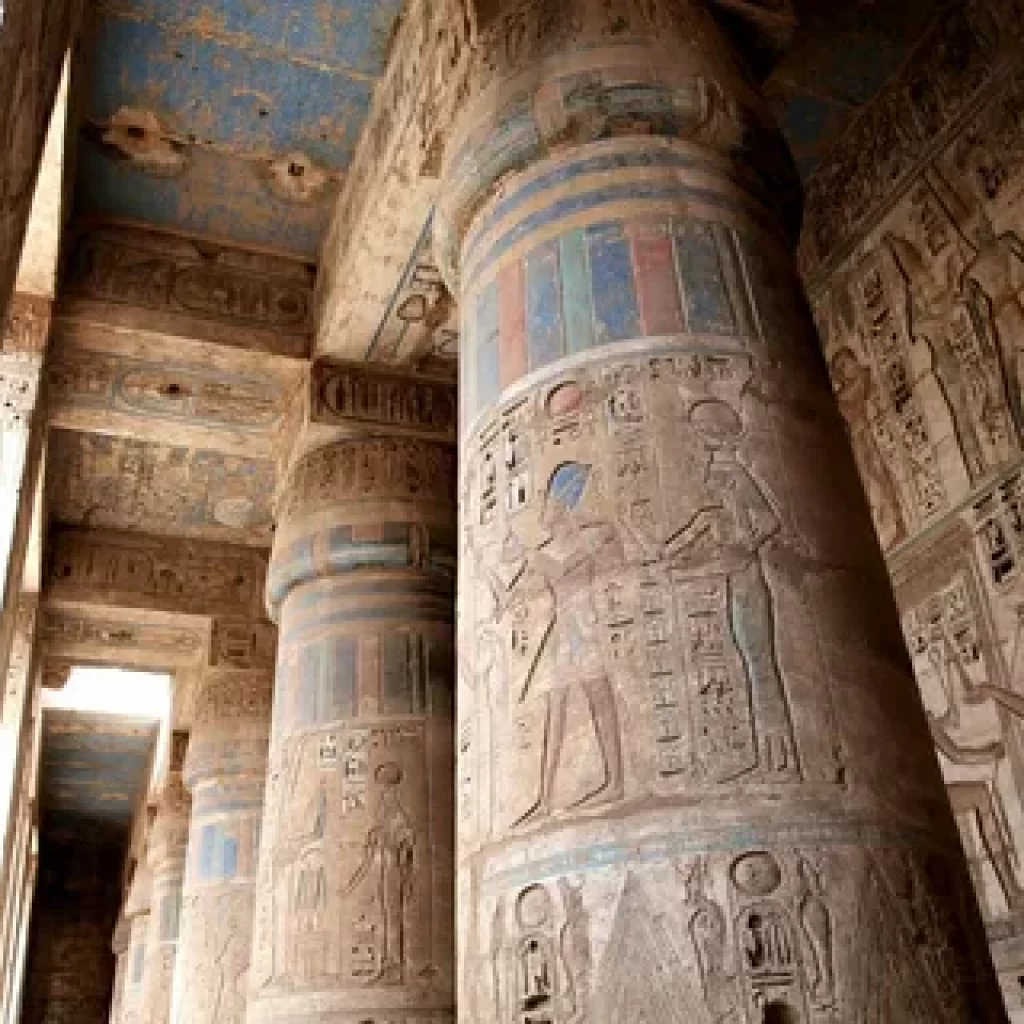
4. The Smaller Temple of Nefertari
The complete temples were moved in 1968, to a place high above the Aswan High Dam, because they would have been flooded by water from Lake Nasser which was formed by the building of a dam on the Nile River. Though Abu Simbel now sits just beside the reservoir of Aswan, the temple was rebuilt at exactly the right orientation so that the sun continues to shine on Ramses II Abu Simbel temples are considered an obvious evidence that show the ancient Egyptian knowledge of astronomy.
5. The Relocation of the Temples
The complete temples were moved in 1968, to a place high above the Aswan High Dam, because they would have been flooded by water from Lake Nasser which was formed by the building of a dam on the Nile River. Though Abu Simbel now sits just beside the reservoir of Aswan, the temple was rebuilt at exactly the right orientation so that the sun continues to shine on Ramses II Abu Simbel temples are considered an obvious evidence that show the ancient Egyptian knowledge of astronomy.
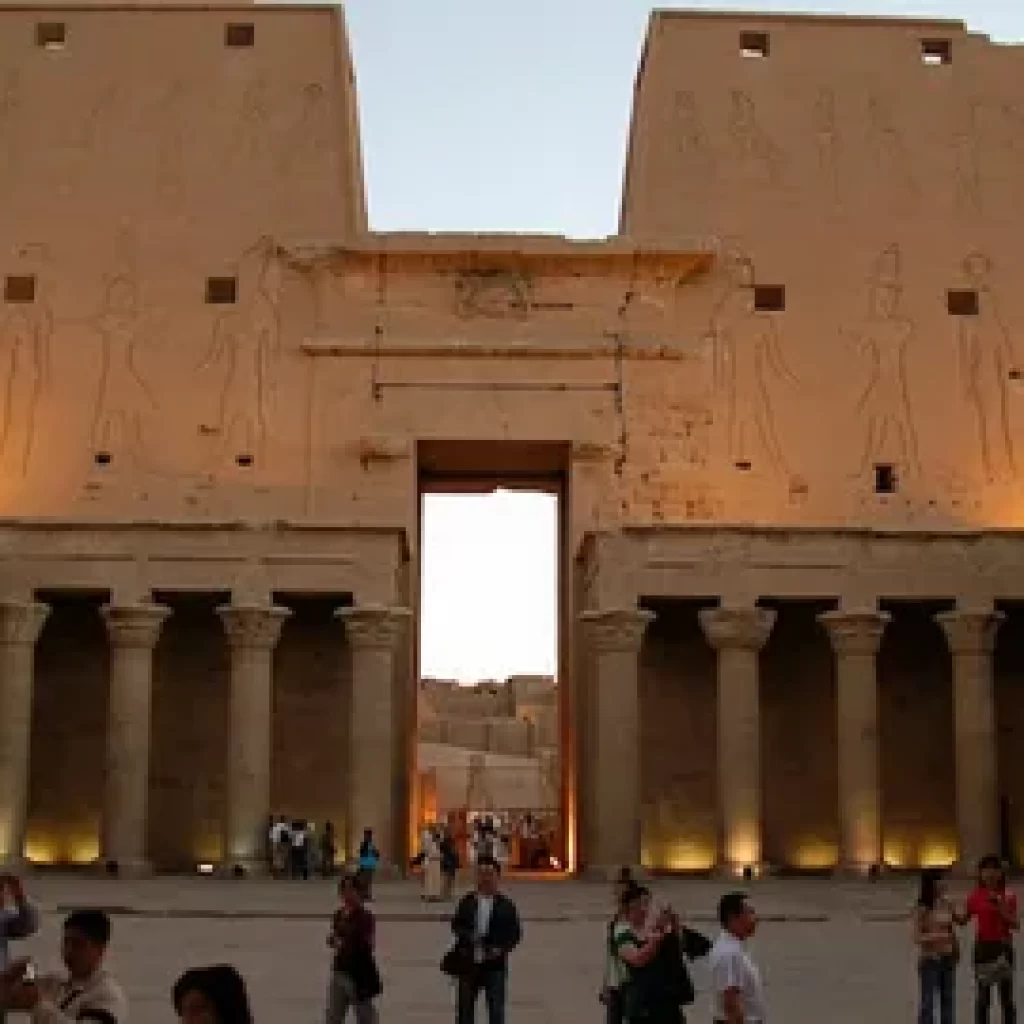
6. The Significance of the Sun Festival
illuminated by artificial light but for Millennia they remained in darkness except two days a year February the 21st and October the on these two days the sun’s rays penetrate the depths of the temple over 50 m and eliminate three solar Gods P who is not one was deliberately kept in the shadows since the temple was moved the phenomenon now occurs on February the 22nd and October the 22nd the secret of this event was rediscovered in 1874 since then of course the secret has been widely [Music] spread on the north wall Ramis incenses.
7. The Temples’ Role in Ancient Egyptian Religion
south as you know the temples are no longer in their original location I explained in my previous video how they were moved 65 M higher and 200 M back from the river which is now Lake [Music] nassa at the beginning of the 19th century the two cave temples were almost covered in sand it was the Venetian Explorer and egyptologist Belzoni who was the first to enter on August the 1st 1817 the expedition was financed by the consul general of Great Britain Henry salt but it was really champon Expedition that made the temples.
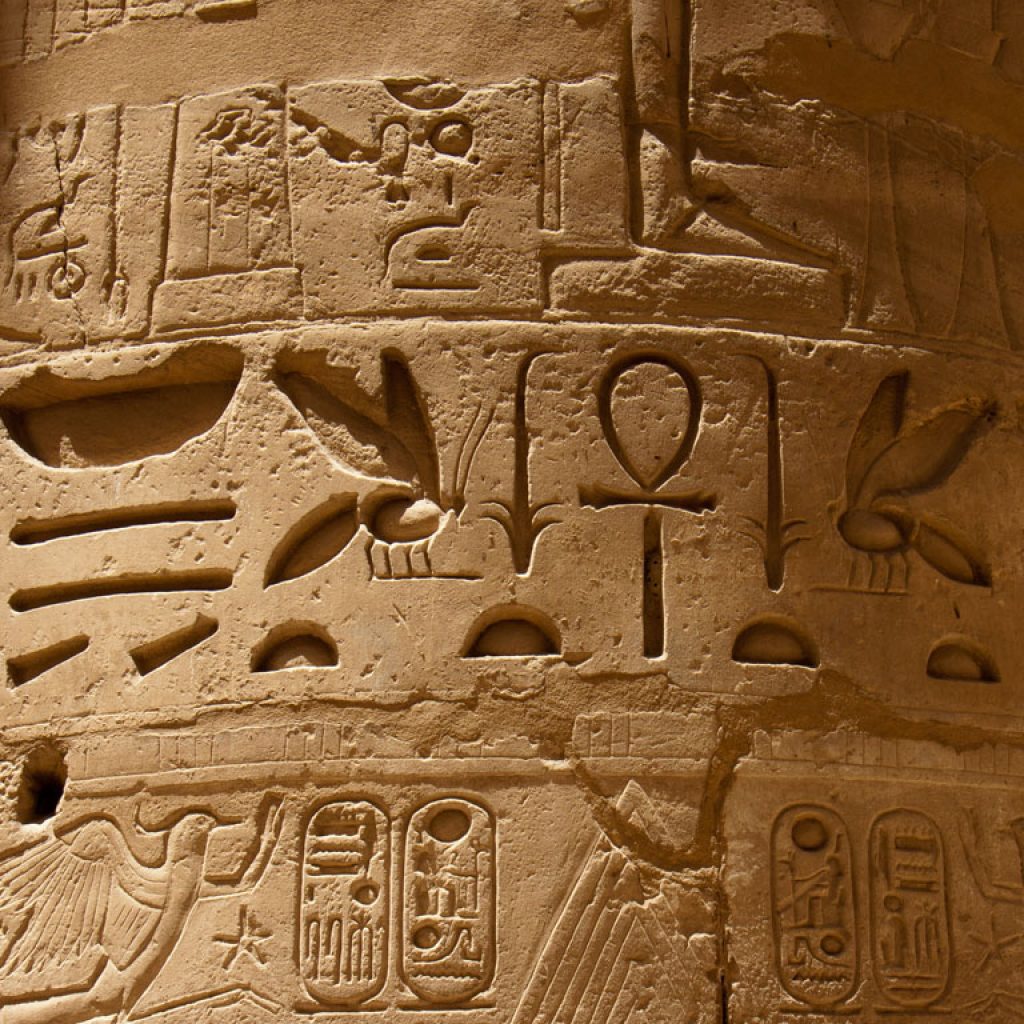
8. Visiting Abu Simbel: Travel Tips
on the right upper Egypt with the lotuses the temple was inaugurated around 1260 BC but not the slightest trace of its gigant antic construction site has been found it’s dedicated to the great God of the Empire amanra the Sun God rahti and the god P however it’s almost entirely dedicated to the glory of ramsus II these eight pillars are 10 m High and the statues 8 m and everything was sculpted by digging into the Rock mass of the cliff the first hypers steel room plays the role of a first Courtyard .
9. Preservation Efforts and Modern Challenges
traditional representation of prisoners of War here at the Nubians on the other side the Asians also Chained and on their knees their elbows are tied behind their backs their ties pass around their necks and are finished with papus for the Asians and lotuses for the Nubian above the prisoners before the entrance Door two identical cemeter scenes face each other the double god of the Nile happy ties together the two emblematic plants of Upper and Lower Egypt the God on the left represents Lower Egypt with its paparo and the one.
10. The Impact of Abu Simbel on Egyptian Tourism
Ramis II massacr his enemies to the right of the captives but hidden by the pillar rahti hands a sword to the Pharaoh we only see six in this photo but the first nine Daughters of ramsis are represented in the bottom register the scene repeats this self on the other side of the front door but is Arman ra who hands the sword to Ramis II the kopesh is an Egyptian sword of hixus origin commonly used in the New Kingdom Ramis II would have been the first pharaoh to have adopted it in times of War here the first eight sons.
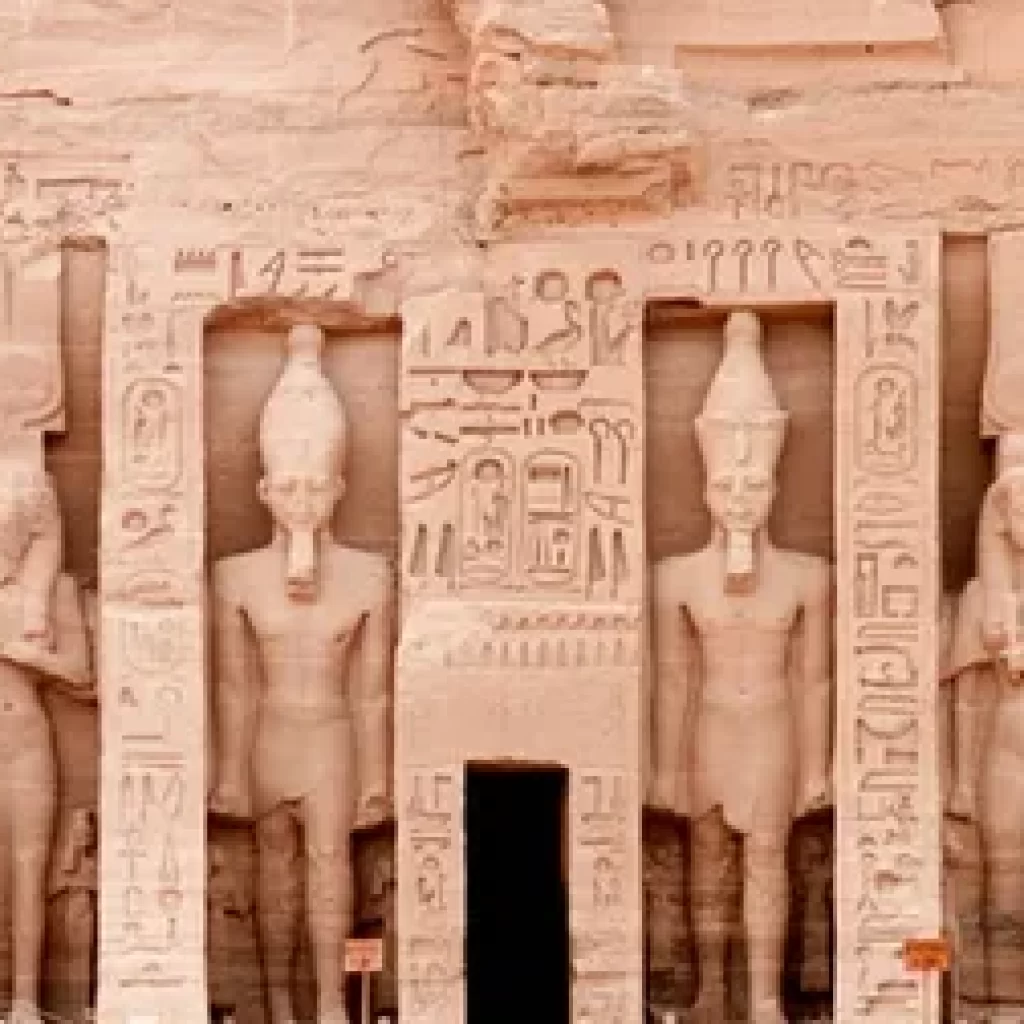
Conclusion:Abu Simbel Temples
The sun shines on the face of the statue of Ramses II inside the sanctum of the temple of Abu Simbel. This astronomical phenomenon is witnessed twice a year by thousands of tourists from all over the world It is believed that the axis of the temple was positioned by the ancient Egyptian architects in such a way that on October 22 and February 22, the rays of the sun would penetrate the sanctuary and illuminate the sculptures on the back wall The phenomenon of solar alignment on the face of King Ramses II twice a year.
FAQs:Abu Simbel Temples
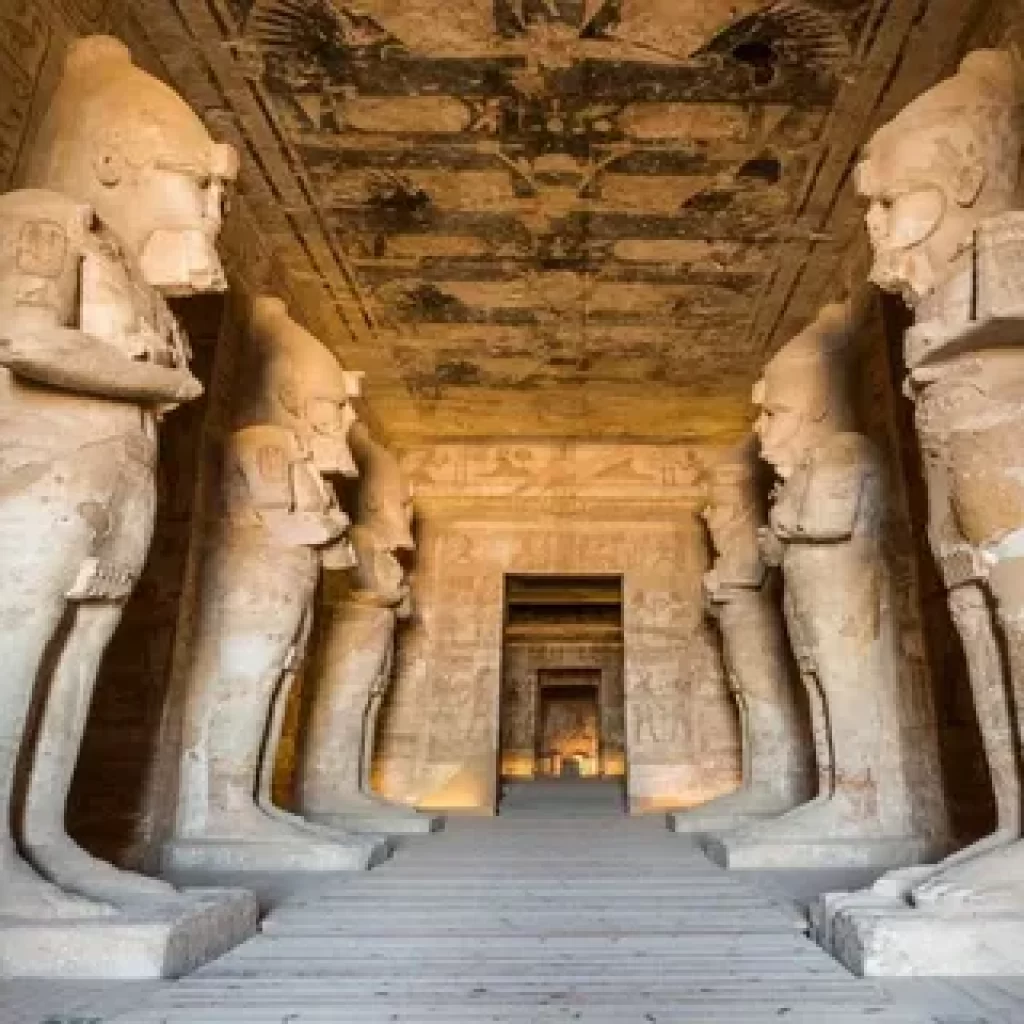
- What are the Abu Simbel Temples? The Abu Simbel Temples are ancient monuments in southern Egypt, built by Pharaoh Ramses II in the 13th century BCE.
- Who built the Abu Simbel Temples? The temples were built by Pharaoh Ramses II during the New Kingdom period of ancient Egypt.
- Why were the Abu Simbel Temples relocated? The temples were relocated to prevent them from being submerged by the waters of Lake Nasser, created by the construction of the Aswan High Dam.
- When is the Sun Festival at Abu Simbel? The Sun Festival occurs twice a year, on February 22 and October 22.
- What is the significance of the Great Temple? The Great Temple is dedicated to the gods Amun, Ra-Horakhty, and Ptah, as well as Ramses II, showcasing his divine status and military achievements.
- How can I visit Abu Simbel? Visitors can reach Abu Simbel by plane from Aswan or by bus. It’s recommended to visit early in the morning and to hire a tour guide for a richer experience.
- What efforts are being made to preserve the Abu Simbel Temples? Preservation efforts include using modern technology like 3D scanning to monitor the temples’ condition and promote sustainable tourism practices.





Comment (0)